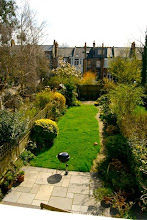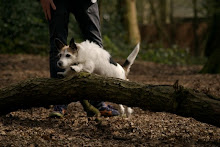





The blue skies are still empty of planes this weekend, but the red kites are soaring in pairs over the M40, where the wide road cuts sharp through the Chiltern escarpment. Watching them wheel over the motorway traffic never fails to thrill me; these birds of prey that had come close to extinction, but now thrive even in our densely populated islands. I have been reading Robert Macfarlane's inspiring book, '
The Wild Places', which describes his journeys through Britain and Ireland in search of landscapes beyond those carved up by motorways, far from the hot dust of car exhausts -- Orford Ness, Rannoch Moor, Cape Wrath, Loch Coruisk and Strathnaver. Macfarlane succeeds magnificently in his aim of making a map that might be set against the modern road atlas: a prose map that seeks to make wild places visible again, recording their contours before they vanish. His vision of wild places opens up a realm of headlands, cliffs, beaches, tors, forests, rivers, waterfalls; where the horizon is visible, where wood and rock and water are untrammeled by tarmac or concrete.
After too long in the confines of low skies and London streets, I crave the sight of those untamed landscapes; but like so many of us, I am also attached to gentler places, where gardens have been tended and cherished for generations. One of the loveliest was created by Rosemary Verey at
Barnsley House in Gloucestershire, from where I have just returned. Even if you live faraway, and cannot visit it on one of its open days (or perhaps the annual Barnsley village
garden festival next month) Verey's writing casts light onto her garden, and her vision of the natural world. 'I enjoy patterns, man-made and natural,' she wrote in '
A Countrywoman's Notes', 'and as soon as I start looking around me, they are everywhere.' She recorded Cotswold sheep paths and the traditional patterns of wall-builders: 'a random pattern, you may think, but as they worked the wall was dictated by the lie of the land, the farmer's whims and needful boundaries.'
Verey's garden survives at Barnsley, even as the years gather after her death; its contours still visible, the hedges and trees that she planted shaping the outline of her past, and of previous generations that loved this land. How blessed to be allowed to step into it again, to smell its scents, see its blossoms, touch its leaves; and how good to know that this gentle place lives on.
I am sure that many who read this already cherish their own green spaces; and feel the sense of hope that Robert Macfarlane expresses toward the end of his book, when he recognises that even in a crowded country, the wild finds its way.
'We are fallen in mostly broken pieces, I thought, but the wild can still return us to ourselves.'
























